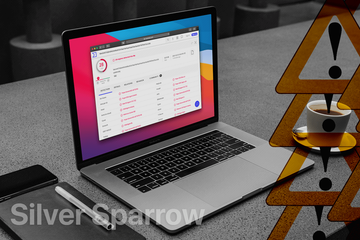Malware authors broke new ground again by launching a Mac threat dubbed Silver Sparrow that has versions infecting machines with M1 and Intel chips on board.
| Threat Profile | |
|---|---|
| Name | Silver Sparrow |
| Category | Mac backdoor, M1 compatible malware |
| Detection | Avast: MacOS:Agent-OC [Trj], Bitdefender: Trojan.GenericKD.45772753, ESET-NOD32: OSX/Agent.BL, F-Secure: Malware.OSX/Agent.smpwq, McAfee: OSX/Agent.q, Sophos: OSX/SlvSpr-A |
| Symptoms | Downloads extra malware, periodically communicates with malicious C2 server |
| Distribution Techniques | Rogue app installers (update.pkg, updater.pkg) |
| Severity Level | Medium |
| Damage | Opens a backdoor to download more malware |
| Removal | Scan your Mac with Combo Cleaner to detect all files related to the browser hijacker. Use the tool to remove the infection if found. |
In light of Apple’s recent big shift toward its proprietary M1 ARM64 system on a chip (SoC) architecture, cybercriminals got busy probing Silicon-based Macs for vulnerabilities. It turns out that the security of this all-new framework doesn’t quite measure up against what was expected. Over the past couple of weeks, analysts have unveiled two strains of malicious code that run natively on M1 Macs. These were discovered in quick succession one after another. I previously did a write-up on the first sample, a Pirrit adware spinoff disguised as a harmless Safari extension. The anticipation that this was a marginal occurrence didn’t last beyond February 18, 2021, when one more ARM-aware menace codenamed Silver Sparrow splashed onto the scene.

Aside from the capability to contaminate Mac computers with Apple Silicon inside, this baddie has a few more quirks that make it unique. To begin with, there is also an Intel variant in the wild, which suggests that the agile crooks are trying to embrace maximum victim audiences. Another offbeat thing is that at the time of discovery, Silver Sparrow was found to have infiltrated roughly 30,000 Macs, with most victims based in the U.S., the UK, Canada, France, and Germany. That’s a significant coverage for a just-spotted sample. Furthermore, the predatory app leverages JavaScript to be executed, which is a very unorthodox hallmark for Mac malware across the board.
Silver Sparrow may re-infect your Mac multiple times unless you delete all of its fragments, including hidden ones. Therefore, it is recommended to download Combo Cleaner and scan your system for these stubborn files. This way, you may reduce the cleanup time from hours to minutes.
Download Now Learn how Combo Cleaner works. If the utility spots malicious code, you will need to buy a license to get rid of it.Silver Sparrow is making the rounds via two booby-trapped installer packages, update.pkg and updater.pkg. These files are laced with dodgy JavaScript code that runs at an early stage of the setup process. The screenshot above illustrates a treacherous message that appears once the installer is launched. It says, “This package will run a program to determine if the software can be installed”. Once an unwitting user clicks Continue, the evil JavaScript component kicks in to unleash active malware deployment. At this point, it doesn’t matter if the victim quits the installer, as the infection chain has already been triggered and a malicious app called Updater or Tasker instantly crops up in the Mac’s Applications list.
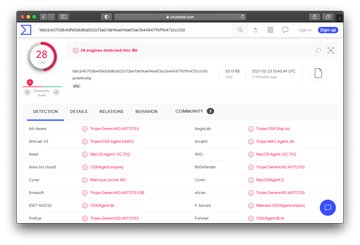
The attack reaches the next level when the above-mentioned JS code adds a dubious LaunchAgent whose role is to execute a particular script with one-hour intervals. Named verx.sh, this entity is geared toward interacting with the perpetrators’ Command and Control (C2) server. Another task is to check whether a file named ._insu is present in the ~/Library/ folder. Although this item contains no data, its most likely function is to instruct the Silver Sparrow malware to enter a self-deletion phase based on some predefined algorithm. More importantly, the file is supposed to pull in a malicious payload from a specific URL. This tends to be the culmination of any breach like that, but in this particular scenario, the assault ends up being a fiasco because the download URL is blank.
In other words, the current versions of Silver Sparrow don’t actually promote any opportunistic threats. This can change in a snap, though. As soon as its operators specify the domain from which the ._insu file should request a payload, the whole foul play could turn into a highly effective Mac malware distribution scheme. Meanwhile, it looks like a wicked proof of concept that’s supposed to give bad actors an idea of whether malware can survive Mac M1 defenses. The backdoor mechanism is here and it proved to be viable, and so it seems that more harmful incarnations of Silver Sparrow have yet to come.
Silver Sparrow malware manual removal for Mac
The steps listed below will walk you through the removal of this malicious application. Be sure to follow the instructions in the specified order.
Expand the Go menu in your Mac’s Finder bar and select Utilities as shown below.
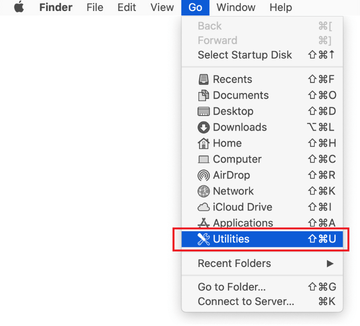
Locate the Activity Monitor icon on the Utilities screen and double-click on it.
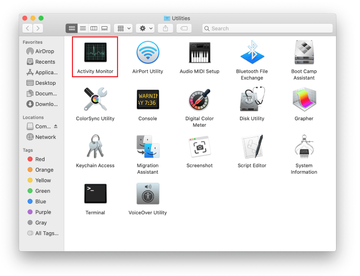
In the Activity Monitor app, look for a process that appears suspicious. To narrow down your search, focus on unfamiliar resource-intensive entries on the list. Keep in mind that its name isn’t necessarily related to the way the threat is manifesting itself, so you’ll need to trust your own judgement. If you pinpoint the culprit, select it and click on the Stop icon in the upper left-hand corner of the screen.
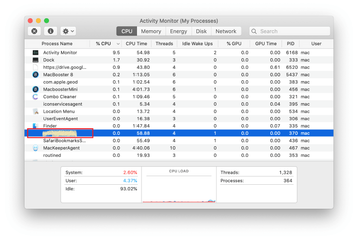
When a follow-up dialog pops up asking if you are sure you want to quit the troublemaking process, select the Force Quit option.
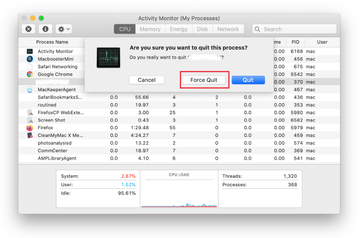
Click on the Go menu icon in the Finder again and select Go to Folder. You can as well use the Command-Shift-G keyboard shortcut.

Type /Library/LaunchAgents in the folder search dialog and click on the Go button.

Examine the contents of the LaunchAgents folder for dubious-looking items. Be advised that the names of files spawned by malware may give no clear clues that they are malicious, so you should look for recently added entities that appear to deviate from the norm.
As an illustration, here are several examples of LaunchAgents related to mainstream Mac infections: com.pcv.hlpramc.plist, com.updater.mcy.plist, com.avickUpd.plist, and com.msp.agent.plist. If you spot files that don’t belong on the list, go ahead and drag them to the Trash.
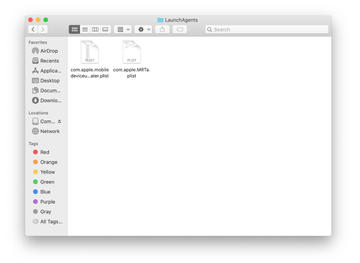
Use the Go to Folder lookup feature again to navigate to the folder named ~/Library/Application Support (note the tilde symbol prepended to the path).
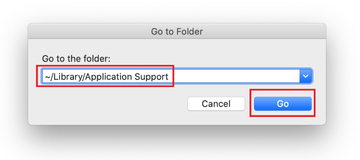
When the Application Support directory is opened, identify recently generated suspicious folders in it and send them to the Trash. A quick tip is to look for items whose names have nothing to do with Apple products or apps you knowingly installed. A few examples of known-malicious folder names are verx_updater, ProgressSite, and IdeaShared.
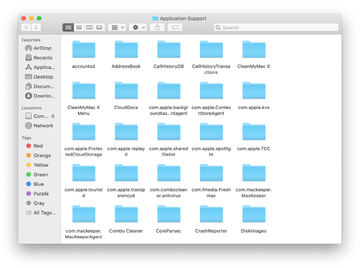
Enter ~/Library/LaunchAgents string (don’t forget to include the tilde character) in the Go to Folder search area.

The system will display LaunchAgents residing in the current user’s Home directory. Look for init_verx.plist and other dodgy items related to Silver Sparrow virus (see logic highlighted in subsections above) and drag the suspects to the Trash.
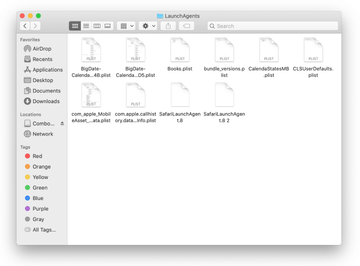
Type /Library/LaunchDaemons in the Go to Folder search field.
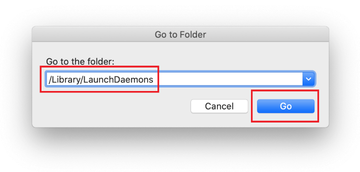
In the LaunchDaemons path, try to pinpoint the files the malware is using for persistence. Several examples of such items cropped by Mac infections are com.pplauncher.plist, com.startup.plist, and com.ExpertModuleSearchDaemon.plist. Delete the sketchy files immediately.
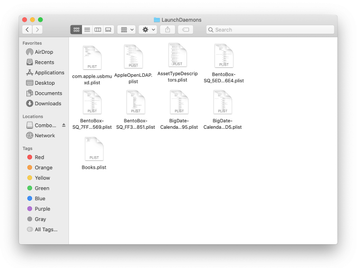
Click on the Go menu icon in your Mac’s Finder and select Applications on the list.

Find the entry for Updater.app, Tasker.app, or another app that clearly doesn’t belong there and move it to the Trash. If this action requires your admin password for confirmation, go ahead and enter it.
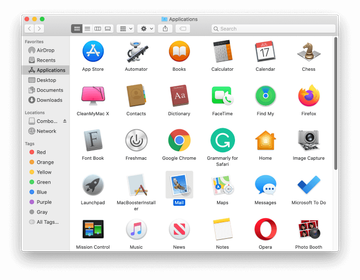
Expand the Apple menu and select System Preferences.
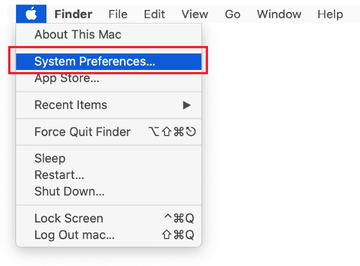
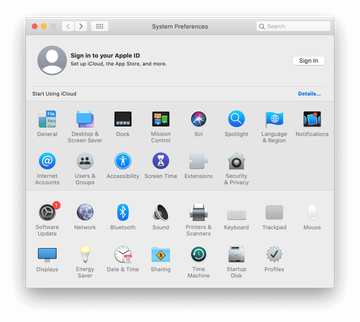
Proceed to Users & Groups and click on the Login Items tab.
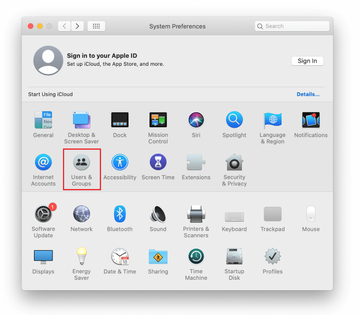
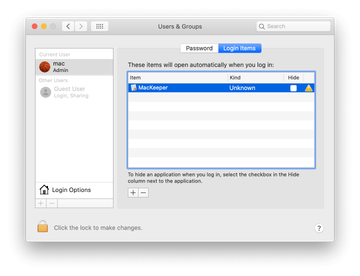
Now select Profiles under System Preferences. Look for a malicious item in the left-hand sidebar. Several examples of configuration profiles created by Mac adware include TechSignalSearch, MainSearchPlatform, AdminPrefs, and Chrome Settings. Select the offending entity and click on the minus sign at the bottom to eliminate it.
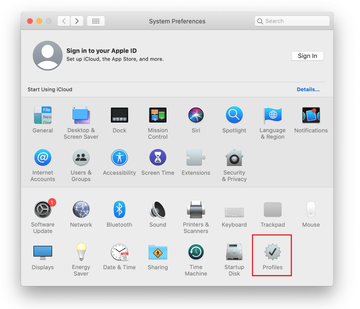
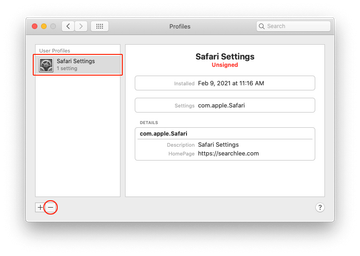
Get rid of Silver Sparrow virus in web browser on Mac
To begin with, the web browser settings taken over by the Silver Sparrow virus should be restored to their default values. Although this will clear most of your customizations, web surfing history, and all temporary data stored by websites, the malicious interference should be terminated likewise. The overview of the steps for completing this procedure is as follows:
- Remove Silver Sparrow virus from Safari
Open the browser and go to Safari menu. Select Preferences in the drop-down list.
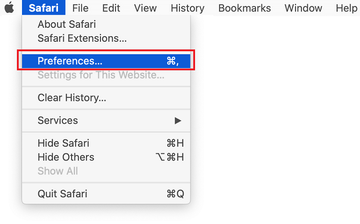
Once the Preferences screen appears, click on the Advanced tab and enable the option saying “Show Develop menu in menu bar”.
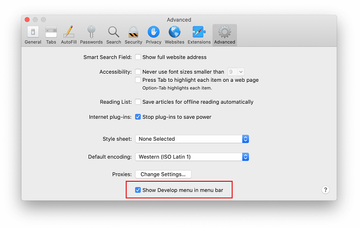
Now that the Develop entry has been added to the Safari menu, expand it and click on Empty Caches.
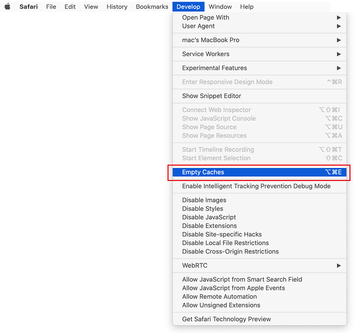
Now select History in the Safari menu and click on Clear History in the drop-down list.
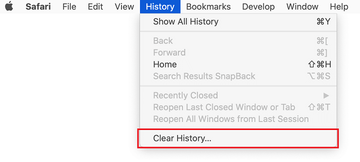
Safari will display a dialog asking you to specify the period of time this action will apply to. Select all history to ensure a maximum effect. Click on the Clear History button to confirm and exit.

Go back to the Safari Preferences and hit the Privacy tab at the top. Find the option that says Manage Website Data and click on it.

The browser will display a follow-up screen listing the websites that have stored data about your Internet activities. This dialog additionally includes a brief description of what the removal does: you may be logged out of some services and encounter other changes of website behavior after the procedure. If you’re okay with that, go ahead and click on the Remove All button.
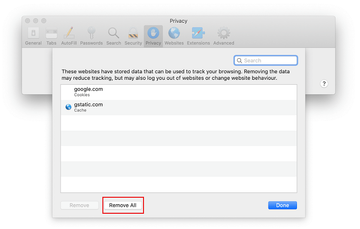
Restart Safari
- Remove Silver Sparrow in Google Chrome
Open Chrome, click the Customize and control Google Chrome (⁝) icon in the top right-hand part of the window, and select Settings in the drop-down
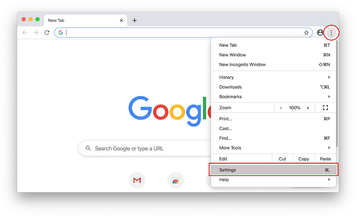
When on the Settings pane, select Advanced
Scroll down to the Reset settings section.
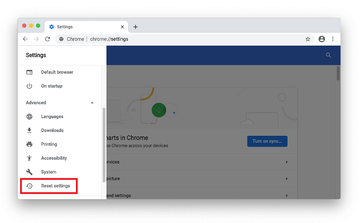
Confirm the Chrome reset on a dialog that will pop up. When the procedure is completed, relaunch the browser and check it for malware activity.
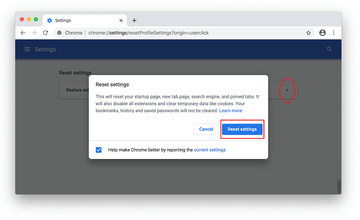
- Remove Silver Sparrow from Mozilla Firefox
Open Firefox and go to Help – Troubleshooting Information (or type about:support in the URL bar and press Enter).
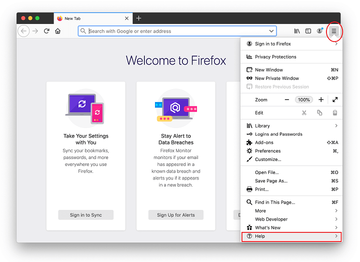

When on the Troubleshooting Information screen, click on the Refresh Firefox button.
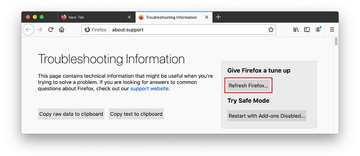
Confirm the intended changes and restart Firefox.
Get rid of Silver Sparrow virus using Combo Cleaner removal tool
The Mac maintenance and security app called Combo Cleaner is a one-stop tool to detect and remove Silver Sparrow virus. This technique has substantial benefits over manual cleanup, because the utility gets hourly virus definition updates and can accurately spot even the newest Mac infections.
Furthermore, the automatic solution will find the core files of the malware deep down the system structure, which might otherwise be a challenge to locate. Here’s a walkthrough to sort out the Silver Sparrow issue using Combo Cleaner:
Download Combo Cleaner installer. When done, double-click the combocleaner.dmg file and follow the prompts to install the tool onto your Mac.
By downloading any applications recommended on this website you agree to our Terms and Conditions and Privacy Policy. The free scanner checks whether your Mac is infected. To get rid of malware, you need to purchase the Premium version of Combo Cleaner.
Open the app from your Launchpad and let it run an update of the malware signature database to make sure it can identify the latest threats.
Click the Start Combo Scan button to check your Mac for malicious activity as well as performance issues.
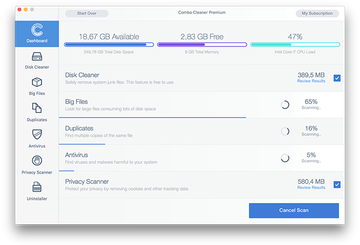
Examine the scan results. If the report says “No Threats”, then you are on the right track with the manual cleaning and can safely proceed to tidy up the web browser that may continue to act up due to the after-effects of the malware attack (see instructions above).
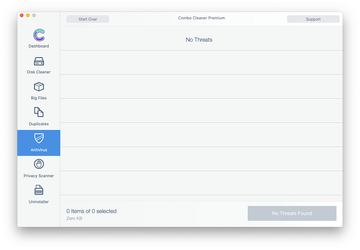
In case Combo Cleaner has detected malicious code, click the Remove Selected Items button and have the utility remove Silver Sparrow threat along with any other viruses, PUPs (potentially unwanted programs), or junk files that don’t belong on your Mac.
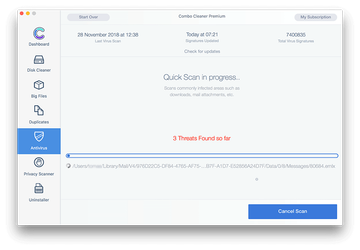
Once you have made doubly sure that the malicious app is uninstalled, the browser-level troubleshooting might still be on your to-do list. If your preferred browser is affected, resort to the previous section of this tutorial to revert to hassle-free web surfing.
